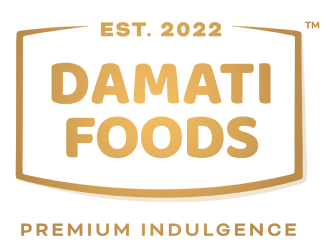Unveiling The Sweet World: The Difference Between Compound Chocolate And Couverture Chocolate
Chocolate, a divine delight adored by people of all ages, comes in a variety of forms, each possessing distinct characteristics. Two such varieties that often spark curiosity and debates among chocolate enthusiasts are compound chocolate and couverture chocolate. Understanding the difference between these two can elevate your chocolate experience and help you appreciate the craftsmanship behind each type. In this blog, we embark on a mouth-watering journey to demystify the dissimilarities between compound chocolate and couverture chocolate, with a special focus on the latter's exquisite allure.

Understanding Compound Chocolate
Compound chocolate is the more accessible and pocket-friendly cousin of its traditional counterpart. Unlike couverture chocolate, compound chocolate is formulated using vegetable fats, such as palm kernel oil or coconut oil, instead of cocoa butter. This substitution makes it easier to handle during production, especially in regions with warm climates, where cocoa butter's melting point can present challenges.
The Perks of Compound Chocolate
Affordability: The use of vegetable fats lowers production costs, making compound chocolate a popular choice for mass-produced confectionery items and candies available at competitive prices.
Melting Simplicity: Due to its higher tolerance to heat, compound chocolate is less finicky during melting and moulding processes, making it an ideal option for home bakers and DIY chocolatiers.
Shelf Stability: The presence of vegetable fats grants compound chocolate a longer shelf life, extending the viability of confectionery products and coatings.
The Allure of Couverture Chocolate
Couverture chocolate, the epitome of chocolate elegance, is a premium-grade delicacy cherished by chocolatiers, pastry chefs, and enthusiasts alike. This chocolate variety boasts a high cocoa butter content, ranging from 30% to 40%, and is crafted from the finest cocoa beans sourced from select regions worldwide. To maintain its exceptional quality, couverture chocolate undergoes a tempering process, which involves precise heating and cooling to form stable cocoa butter crystals.
The Delights of Couverture Chocolate
Divine Flavour and Texture: The rich, complex taste of couverture chocolate showcases the finest cocoa notes, enthralling the palate with its velvety, smooth texture, and enchanting aroma.
Ideal for Dipping and Coating: Couverture chocolate's tempering process results in a glossy finish and excellent fluidity, making it a preferred choice for coating and dipping truffles, fruits, and other delicacies.
Artistic Craftsmanship: This luxurious chocolate variety is the ultimate canvas for chocolatiers and pastry chefs to showcase their creativity, allowing them to craft exquisite confections and elaborate chocolate sculptures.

In conclusion, compound chocolate and couverture chocolate represent two sides of the chocolate spectrum, each catering to different preferences and purposes. While compound chocolate offers accessibility and convenience for everyday treats, couverture chocolate indulges chocolate connoisseurs with its unparalleled taste, texture, and versatility. Whether you're savouring a simple chocolate bar or admiring an intricately designed chocolate sculpture, understanding the distinction between these chocolate types enriches your appreciation for the captivating world of cocoa.
So, the next time you indulge in a delectable chocolate treat, take a moment to savour the magic and finesse that sets compound chocolate and couverture chocolate apart, and let your taste buds revel in the divine flavours of this timeless delicacy.









